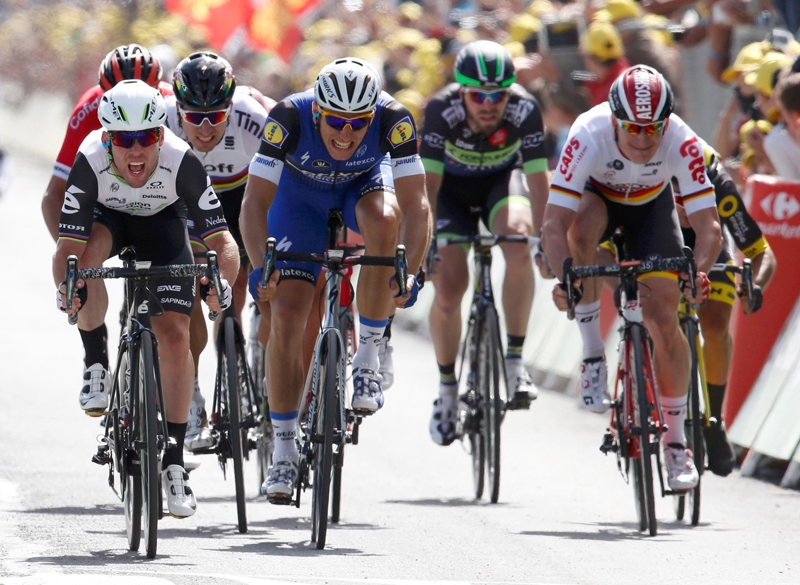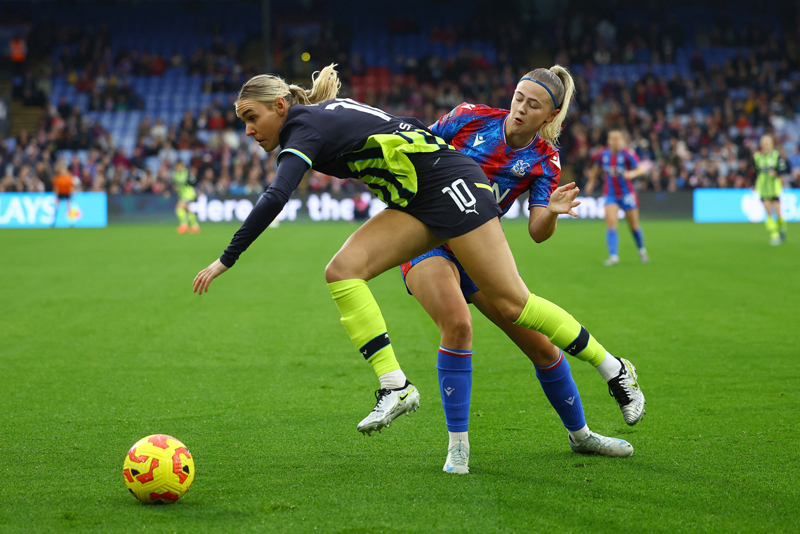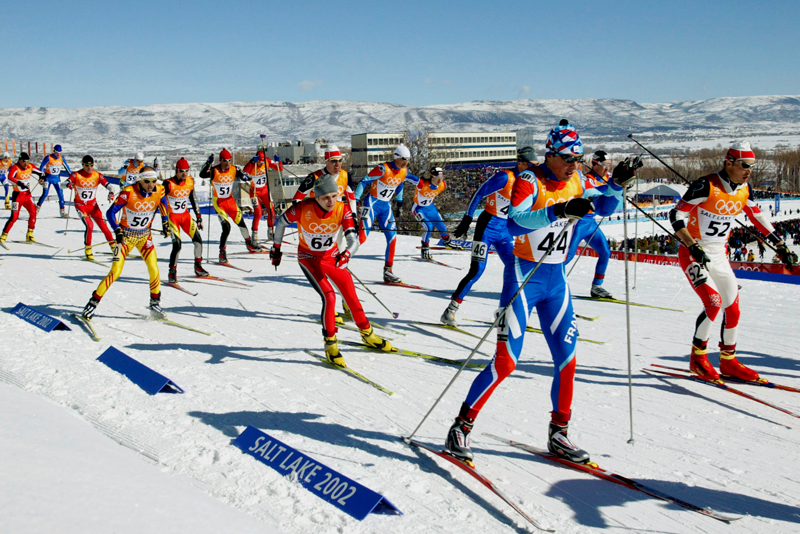As previously mentioned in Sports Performance Bulletin articles, it is relatively easy to monitor training loads in the gym, the pool, the track and so on(1). However, it’s much harder to monitor the training stress accumulated through matches, races and team training sessions. It’s even harder (if not impossible) to monitor stresses incurred outside the training environment or poor lifestyle behaviour, such as exams, financial worries, moving house, relationship difficulties, nutritional and sleep behaviours and so on.
As a coach it is critically important to recognise when an athlete is likely to suffer from overtraining syndrome (OTS) and more importantly how to prevent it. However, this is made difficult by the fact that markers for OTS are very similar to those for ‘overreaching’. Similarities are also found in symptoms of chronic fatigue syndrome and depression, which makes the diagnosis of OTS difficult(2).
A review of literature for the overtraining syndrome by Romain Meeusen and others gave a list of potential causes for OTS and how to identify them(3). The authors also defined the terms functional and non-functional overreaching. Functional overreaching is a necessary part of training, especially during training camps or perhaps the off season, when there is no need for immediate performance improvement. Here the conditioning coach will deliberately schedule sessions in a sequence that does not allow full recovery. In the short term this leads to performance decrements, but following a period of rest, the athlete recovers and performs better.
Measuring overreaching
If functional overreaching is a necessary part of training, how can you distinguish between an athlete who is overreached and one who is overtrained? Unfortunately, this is not yet possible to do by looking at just one indicator(3). One of the reasons for this is that due to the ethics involved in studying overtrained athletes it is a difficult area to research; by definition, studies have to be retrospective as no ethics committee, or indeed athlete, would allow actual overtraining to take place, which may then take months to overcome and result in severe performance decrements. Studies that have looked at this area have generally induced an excessive overload of exercise on the athlete over a matter of weeks, but this is overreaching, not overtraining.Non-functional overreaching
Non-functional overreaching is when an athlete becomes tired or underperforms due to an unplanned overload in training or match scheduling; or if the planned overreaching does not result in performance improvement after a short rest.An example of this was found in college American football players during their pre-season training(4). The pre-season was split into three phases:
*Phase 1 was four weeks of weight training;
*Phase 2 was weight training with coach-led conditioning drills;
*Phase 3 was football-specific practice drills.
The second phase of training had a high volume of drills, working on aspects of agility, speed and tackling. The plan was that this period of conditioning would lead to performance improvements ready for the football-specific
phase 3. However, what actually happened was that strength and power decreased during phase 2, after increasing in phase 1, and did not return to baseline values until after phase 3.
The authors concluded that the drills conducted in phase 2 were too high in volume, not allowing adequate time for adaptation. The drills included speed work and agility work, but involved continuous effort, so were actually helping the athletes deal with lactic acid build up. However, due to the high rest:work ratios in matches, this is not a key element in American football. Therefore, this programme resulted in non-functional overreaching, leading to performance decrements, rather than increments.
Overtraining
Overtraining is a syndrome that lasts weeks or more usually, months(5). It is more common in experienced athletes, who have a greater training history. Their training volumes and intensities are generally higher than in novice athletes. Novice athletes do not have to have to undergo such high levels of volume and intensity simply because nearly all stimuli have a training effect. Experienced athletes on the other hand are better able to perform at higher workloads and deal with fatigue.Moreover, novice athletes may not have the experience, desire or physical capacity to work hard enough to provide long-lasting fatigue. The individual session will cause enough fatigue to warrant rest, they are unlikely to do two or three sessions in the same day, and then try again the next. Conversely, elite athletes do know their own bodies better and can identify the difference between just being tired or actually being in danger of overtraining. However, in a group environment, where selection for the team or squad is very important, then the pressure to train harder and more often can lead to OTS – that’s why coaches need to be involved.
Planning
There is a need to balance stress and recovery (physical, emotional and mental) in any athlete’s life(6). While most strength and conditioning coaches and individual sports coaches will periodise their training programmes, coaches in team sports who run group sessions will often find it more difficult. Here, monitoring the state of athletes during the season is essential to help identify potential problems.However, some things can be put in place. The use of ‘hard’, ‘very hard’ and ‘easy’ sessions can be planned into the week. For example, an agility session that works on movement patterns could be termed ‘easy’ and done on a recovery day. But, if the coach then reduces the recovery time, increases the volume of the drills and encourages the players to move faster all the time, then this session quickly becomes ‘hard’. Done on the day after a match, this hinders recovery and the athletes would then go into their planned ‘hard’ sessions even more fatigued. How many times have you seen a coach ‘adapt’ a training session because they didn’t think the players were working hard enough?
Proper planning is also essential to prevent monotony of training and too much volume, both precursors to overtraining. It is equally bad to have players on their feet for six hours a day doing mindless repetitions at sub-maximal pace as it is to have them work at maximal intensity for prolonged periods. Sets, reps, load, speed, time and distance in the gym or on the track can all be planned quite easily, and volume and intensity can be manipulated according to what stage of training the athlete is in.
For example, in pre-season training in semi-professional rugby league players, a six-week progressive overload followed by a seven-day taper was found to improve performance(7). Measuring power, endurance and strength, the researchers found that the rugby players’ functional performance was adversely affected by the six weeks of training. The players had increased both their training volume (six hours per week to 13 hours per week) and intensity over the six weeks. Their training included weights, endurance training and rugby sessions. In the seventh week, training volume (5.5 hours) and intensity were both reduced, to allow adaptation to take place. After the taper, the players were again tested and their strength, power and endurance scores had improved. This is an example of functional overreaching. The training programme was designed to overreach the players, rest them to allow adaptation, and then start training them again.Of course, this study only provides one example of functional overreaching; a longer or shorter taper, with lesser or greater amounts of work may be more suitable in different circumstances. With team sports, however, the imminent season and the coach and athletes’ desire to keep their jobs by winning often curtail the luxury of experimentation.
Performance indicators
While planning is essential, monitoring the effectiveness of your plan is even more important. The use of detailed training diaries can help identify performance decrements in their early stages, or before they actually happen. If an athlete identifies fatigue for seven consecutive days or more, then the coach needs to address this with a reduced training load, and then look at what factors may be causing this fatigue. This monitoring of diaries is easy enough in individual sports but within team sports some form of online monitoring and recording may be necessary. Software that shows changes in profile at a glance allows coaches to monitor a squad of 30-40 players more easily.The use of questionnaires such as the ‘REST-Q’ and the ‘Daily Analyses of Life Demands for Athletes’ (DALDA) have been shown to be effective in indicating overreaching(9,10). However, this can become an exercise in futility if both the coach and athlete are not already ‘sold’ on the idea; both parties need to be educated on the effectiveness and purpose of the monitoring. More importantly, an agreement has to be in place about resting players if signs of non-functional overreaching are present.
Physical tests may be easier to administer and can be effective. The problem is that you need a baseline score, and sub-maximal tests do not appear to be as effective(11). Other factors such as sleep quality, daily variability and adaptation to training can alter heart rate responses to sub-maximal exercise. The multi-stage fitness test has been found to be an indicator of non-functional overreaching, but the practicalities of submitting a team of athletes to this week in, week out to see if they are fatigued may be hard to justify(9).
A simple test that was used in a study on triathletes is the ‘five-bound test’ (5BT)(11). This test starts with the athlete on their preferred foot. He or she then bounds for distance on alternate legs five times and the distance from the start line to the rearmost point of the heel on the fifth bound is measured. In a study, triathletes were split into two groups that completed four weeks of training, followed by a two-week taper. The first group followed an intensive training (IT) protocol that resulted in a deliberate overreaching. The second group followed a self-selecting normal training (NT) protocol that increased in volume over the four weeks. The IT group experienced a training load 290% greater than the NT group over the four-week training period.
While the NT group did not experience any significant performance changes over the six weeks, the IT group did suffer. Their 5BT scores reduced from an average of 11.4m at the beginning of training to 10.5m at the end of the four weeks of training. After the two-week taper, this increased to 11.5m. For sports where most training is spent ‘on feet’, the five-bound test could be an effective, quick and cheap method of measuring current performance, without overstressing the athlete.
Summary
Training without adequate recovery can lead to reduced performance, illness and interrupted training. Coaches must therefore get to know their athletes well and monitor how they are feeling. If short-term performance decrements are only ‘rewarded’ with more work, then a gradual decline will occur which could lead to the overtraining syndrome, and the loss of the athlete to the squad for months. Planning each week and month will help prevent the loss of training sessions, but having the flexibility to adapt to each individual’s needs will result in more athletes progressing and being available for selection. A five-minute conversation with every athlete each week could save hours of trouble later in the season!References
- J Sport Sciences, 20(4) (2002)
- Sports Medicine 32(3) 185-209 (2002)
- Eur J Sport Science 6 (1) 1-14 (2006).
- JSCR 21 (3), 793 -800 (2007).
- Kreider, et al. Overtraining In Sport . Human Kinetics (1998).
- James Loehr. Toughness Training For Life. Plume, (1994).
- Int J Sports Medicine 28(2) 116-124 (2007).
- JSCR 21 (3), 853-856 (2007).
- Eur J Appl Physiol 99 313-324 (2007).
- The Sport Psychologist, 15, 151-167 (2001).
- Int J Sports Medicine 28(2) 125-134 (2007).










